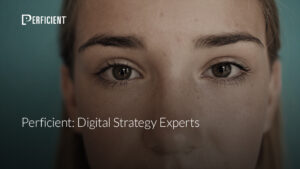In today’s fast-paced digital world, consumers are inundated constantly with marketing messages vying for their attention. As a result, your job is much more challenging. Reaching the right person with the right message at the right time is no easy task.
Choosing the right vehicle to deliver that message is also extremely important. When it comes to creating an effective marketing campaign, the choices you make directly impact your campaign results and potential ROI. Your media budget isn’t just an expense – it’s an investment. And much like other investments in life, it shouldn’t involve willy-nilly decisions. This isn’t a fantasy football league where you pick players based on the color of their jersey. Instead, consider it like a stock portfolio. Make your selections carefully based on the intended outcome. Each one will work separately in its own way, while the whole “portfolio” works collectively to attain a maximum return.
But with so many options, how do you choose which mediums to invest in? There are several factors to consider when allocating your media budget.
1. Message: What’s Your Goal?
At the heart of every campaign is the message. What do you want the customer to remember? What are you asking them to do? If the campaign is focused on generating awareness, the mediums you use will be different, compared to a campaign with a goal of direct response.
- Goal = Awareness: If you have a brand campaign intended to reach a mass audience, your budget may be best spent on awareness tactics such as billboard, radio and TV. These mediums can work together to create a lasting impression through high-impact placements (billboard) and repetition/frequency (radio, TV).
- Goal = Direct Response: If you’re seeking a direct response from the consumer, it may make more sense to allocate the bulk of your budget to digital mediums like online display or pay-per-click campaigns driving directly to your website.
2. Audience: Who Are You Targeting?
The Future is Digital
Becoming digital is the surest way for you to understand your customers' needs and meet their expectations. Learn how Perficient can help anticipate what's ahead for you and your customer with a digital strategy centered around empathy, alignment, and agility.
The beauty of paid media is the ability to effectively reach your desired audience.
- By Demographics & Geography: Advancements in technology, combined with research and data, allow marketers to slice and dice their target audience by demographic factors such as age and gender, or the geographic areas in which they live.
- By Specific Interests & Groups: Digital and social media channels have taken this one step further, and allow for interest targeting or targeting to specific groups: parents, students, sports fans, etc.
Knowing your audience will help you eliminate waste in your media buy across all mediums. If your campaign is intended for a female audience, purchase the appropriate programming. Partner with your marketing firm, and utilize the tools at their disposal to make your selections easier. (And if you don’t have a marketing/media partner, we can help.) Apply these same selections across all channels, whether traditional or digital in nature. The more targeted you are, the more successful your campaign will be.
3. Geography: Where Is Your Audience?
Another way to eliminate wasted marketing dollars is targeting based on geography. What is the physical location of your intended audience? Whether you’re trying to reach a specific state, market or city, you’ll want to factor that into your buy.
- By Broad Territory: Using broadcast media like TV and radio may allow you to reach a broader geographic territory for an awareness campaign.
- By Specific Cities/Zip Codes: On the other hand, digital media outlets can be used to narrow the focus, and target a specific city or zip code. Don’t buy wasted impressions.
4. Diversify: What’s the Right Combination?
Because the world around us is becoming increasingly more digital, it can be tempting to place the majority of your ad budget in online tactics. However, it is important to maintain diversity in your campaign.
Remember your stock portfolio. Is it wise to place all of your money in one place? No. The same is true here. We don’t all consume media in the same way. We don’t rely on one source of information, either. How many media types have you used today? I’ve consumed content from the Internet, Facebook, billboard and radio. No two people are the same, and neither are any two media plans.
Remember, each campaign budget is a blank canvas. There is no one-size-fits-all approach. Similar to setting your stock portfolio, make decisions based on what you know, and maximize your investment.

